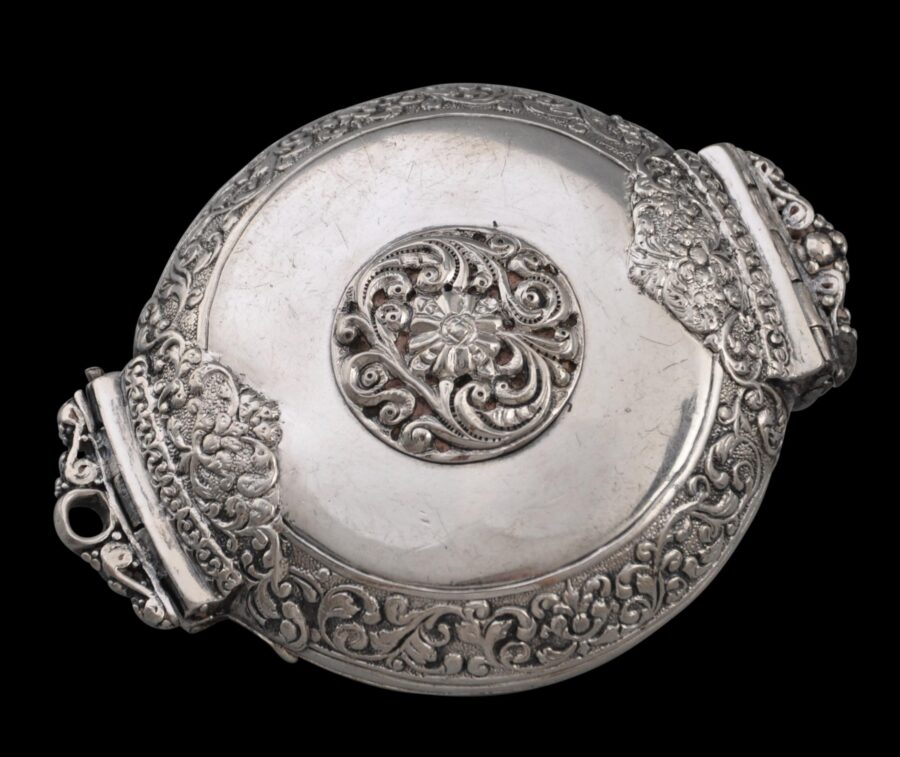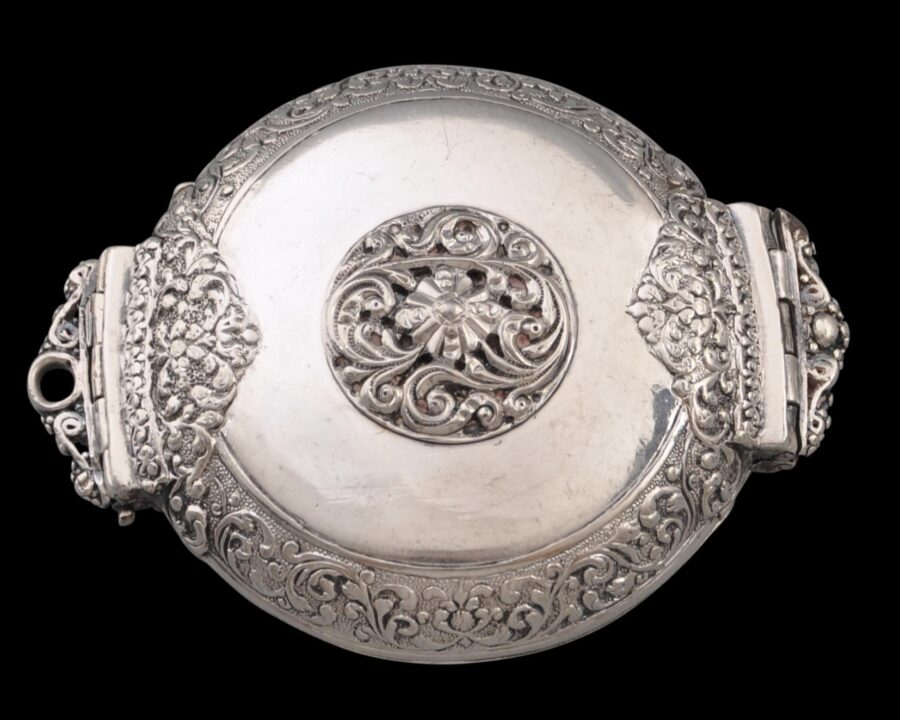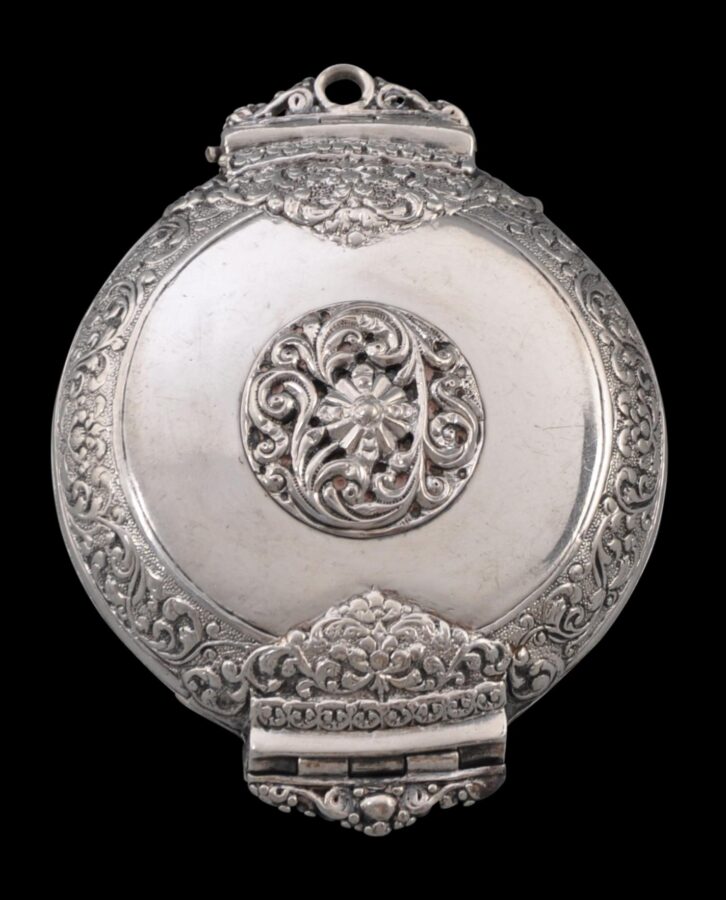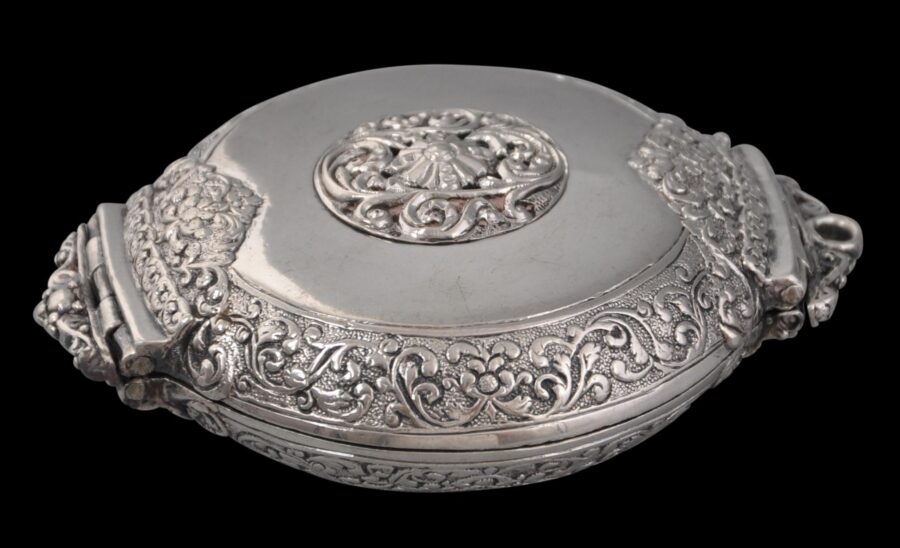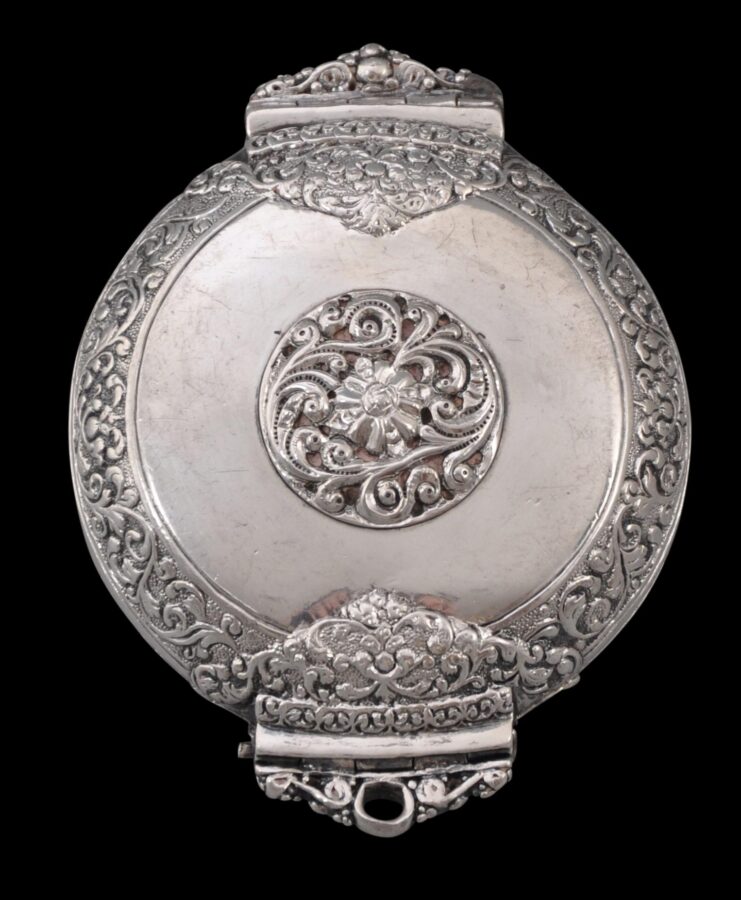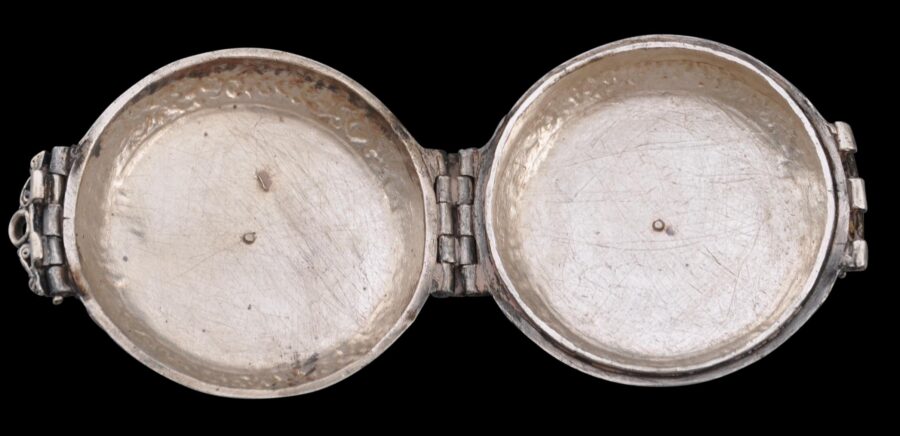Enquiry about object: 9130
Sri Lankan Silver Lime Box (Killotaya) for Betel
Sri Lanka 18th-19th century
length: 8.9cm, width: 7cm, weight: 156g
Provenance
UK art market
This silver box of round, flattened form was used to hold and carry powdered lime (chunam) for mixing with sliced areca nut for betel or paan chewing, Such a box was known in Sri Lanka as a killotaya. It is finely decorated on both sides with scrolling flower and petal motifs, together with broad fields of silver left unworked.
Most killotayas were made of brass or copper. This example being made of finely chased silver was probably commissioned by a member of one of Kandy’s aristocratic families.
It is heavy for its size – the walls are unusually thick: no silver was economised in the casting of this box.
The box flips open to reveal the contents; it has hinges on one side. The form is reminiscent of, and almost certainly based on, a European gentleman’s pocket watch case, and like a watch case, would have been held in a pocket or cloth fold.
In past times, almost all Sri Lankans chewed betel, which served as a mild social stimulant. People would chew betel when they gathered at social occasions. The host would provide the nut and other accompaniments for the betel quid, but each participant was expected to bring his or her slaked or powdered lime, and so killotayas evolved to carry the lime. The killotaya was a uniquely Ceylonese or Sri Lankan item. The need for such boxes arose because it was thought that poison could easily be hidden in lime so the practice developed whereby everyone carried their own lime but not the other ingredients for the betel quid.
A silver lime box of similar form though smaller is in the Clive Collection at Powis Castle, Wales. Importantly for dating purposes, the Powis box is documented in the collection of Robert Clive, Baron Clive of Plassey (‘Clive of India’) from 1775, suggesting that our example might also be 18th century.
The example here is in near-perfect condition. It also closes tightly.
References
Archer, M. et al, Treasures from India: The Clive Collection at Powis Castle, The National Trust, 1987.
Coomaraswamy, A.K., Mediaeval Sinhalese Art, Pantheon Books, 1956 reprint of the 1908 edition.


